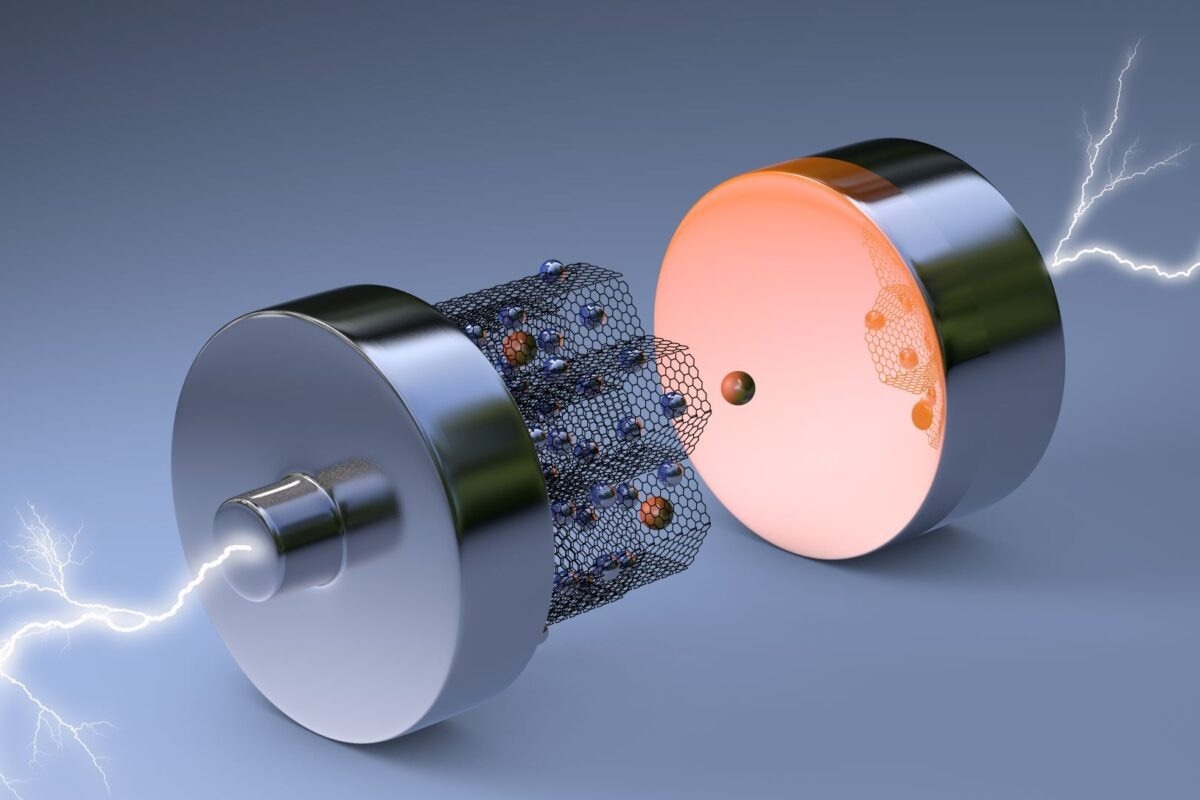As interest in electric vehicles grows, some of their most significant issues become increasingly apparent. Researchers at the University of Texas at Austin are addressing two major difficulties with electric vehicles: limited range and slow charging.

Image Credit: The University of Texas at Austin
The scientists developed a new type of electrode for lithium-ion batteries that could release more power and allow for faster charging. They accomplished this by using magnets to create thicker electrodes, which are the positively and negatively charged components of a battery that deliver power to a device. This strategy avoids common problems with sizing up these critical components.
When compared to a battery utilizing an existing commercial electrode, the outcome is an electrode that might potentially provide twice the range on a single charge for an electric vehicle.
Two-dimensional materials are commonly believed as a promising candidate for high-rate energy storage applications because it only needs to be several nanometers thick for rapid charge transport. However, for thick-electrode-design-based next-generation, high-energy batteries, the restacking of nanosheets as building blocks can cause significant bottlenecks in charge transport, leading to difficulty in achieving both high energy and fast charging.
Guihua Yu, Professor, Walker Department of Mechanical Engineering, University of Texas at Austin
Guihua Yu is also associated with the Texas Materials Institute.
The cornerstone of the discovery is the utilization of thin two-dimensional materials as the electrode’s building blocks, stacking them to generate thickness and then manipulating their orientations using a magnetic field.
During the fabrication process, the researchers employed commercially available magnets to place the two-dimensional materials in a vertical alignment, producing a rapid route for ions to move through the electrode.
The study was published in the journal Proceedings of the National Academy of Sciences.
A slower charging period is often the result of thicker electrodes forcing ions to go farther within the battery. The ions are forced to snake back and forth by the electrode's layers of material, which are normally aligned horizontally.
Our electrode shows superior electrochemical performance partially due to the high mechanical strength, high electrical conductivity, and facilitated lithium-ion transport thanks to the unique architecture we designed.
Zhengyu Ju, Graduate Student, University of Texas at Austin
Zhengyu Ju, a member of Yu’s research group, led the project.
Researchers created a horizontally structured electrode out of the same materials as their electrode as an experimental control in addition to comparing it to a commercial electrode. In comparison to the horizontal electrode, which took 2 hours and 30 minutes to recharge to 50%, the vertical thick electrode took only 30 minutes.
The authors emphasize that their research in this area is still in its early stages. They examined only a single type of battery electrode in this study.
The objective is to generalize their vertically arranged electrode layer technology so that it may be applied to different types of electrodes made of different materials. This could help the approach gain traction in the industry, paving the way for future fast-charging, high-energy batteries that power electric vehicles.
The team included researchers from the University of Texas at Austin: Yu, Ju, Xiao Xu, Xiao Zhang, and Kasun U. Raigama; and from Stony Brook/Brookhaven National Laboratory: Steven T. King, Kenneth J. Takeuchi, Amy C. Marschilok, Lei Wang and Esther S. Takeuchi. The study was financially supported by the US Department of Energy through the multi-institutional Energy Frontier Research Center, the Center for Mesoscale Transport Properties.
Journal Reference
Ju, Z., et al. (2022) Vertically assembled nanosheet networks for high-density thick battery electrodes. Proceedings of the National Academy of Sciences. doi.org/10.1073/pnas.2212777119.